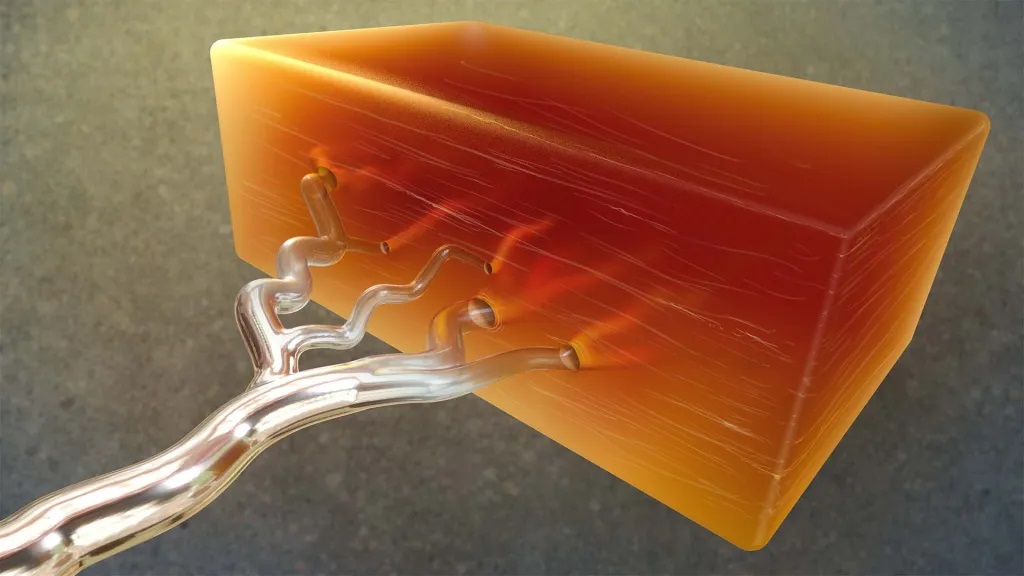Using Liquid Metal to Create New Tissue

The ability to engineer complex biological tissues, such alveoli or blood vessels, has vast potential to help us unlock fundamental biological insights, test new therapeutics, and one day even build fully functional replacement tissues or whole organs. But researchers have found it challenging to use current technologies such as 3D printing to produce living tissues using natural biological materials that include larger organ structures accurately constructed down to the tiny, cellular level. It has been too complex to recreate the many different tissue architectures of the human body in the lab.
A recent, NIH-supported study reported in Nature suggests a clever solution. The key is taking advantage of the natural properties of a silvery metal known as gallium, which is notable for melting at about 30°C, below body temperature, meaning it can be melted by body temperature. The new study demonstrated the metal’s use as a moulding material for generating soft biological structures complete with hollowed-out internal forms in the wide range of intricate shapes and sizes that would be needed to support the growth of larger, lifelike tissues from cells.
The team behind the new approach called ESCAPE (engineered sacrificial capillary pumps for evacuation), is led by Christopher Chen at Boston University and the Wyss Institute at Harvard University in Boston. The research team realised they needed a single process that could handle fragile biological materials while also building well at both large and extremely tiny scales.
How does ESCAPE achieve this? The strategy is much like traditional metal-casting, which has long been used to make intricate jewelry or sculptures from metals, but in reverse. In this process, a template is made from wax inside a rigid material. When the wax is melted away by molten metal, the desired form is left behind.
The researchers realized that gallium was an ideal material to work with for fashioning scaffolds for use in tissue engineering. Gallium is easy to handle and cast into desired shapes. Its low melting point and biocompatibility also made it especially appealing. In the ESCAPE approach, the researchers start by coming up with a desired shape. They then make a solid metal cast of the shape out of gallium. Next, they form a soft biomaterial around the gallium cast. When the temperature is raised, the gallium can be melted and cleanly removed, leaving behind a perfect scaffold. This works well because gallium also has a high surface tension state, which means that it can be made to readily pump itself out of a confined space. Finally, the researchers add cells to the biomaterial scaffold and grow them to form the desired tissue structure.
To demonstrate the potential of ESCAPE, the researchers chose to create blood vessel networks, including lengths at many different scales. They showed they could make complex, cell-laden vascular networks out of collagen, modelling healthy blood vessel structures, as well as some with dead ends found in disease states such as vascular malformations. The structures included 300 micrometre arterioles, as well as microvasculature ten times smaller than that. For context, the diameter of a human hair is around 75 micrometres.
The team went on to show they could produce distinct and interwoven tissue networks like those in the circulatory system. They also built cavities packed with cardiac cells lined with the blood vessels needed to feed them.
While it’s still early, the researchers say that the ESCAPE moulding approach could pave the way for producing a wide range of tissue architectures that had been previously impossible to make in the lab. They’re continuing to explore the approach with various cell types and shapes found in different organs throughout the body. The hope is that these fabricated tissues could help researchers in numerous ways, including for drug testing, the development of new treatments, and potentially one day with organ replacement.
Source: National Institutes of Health

